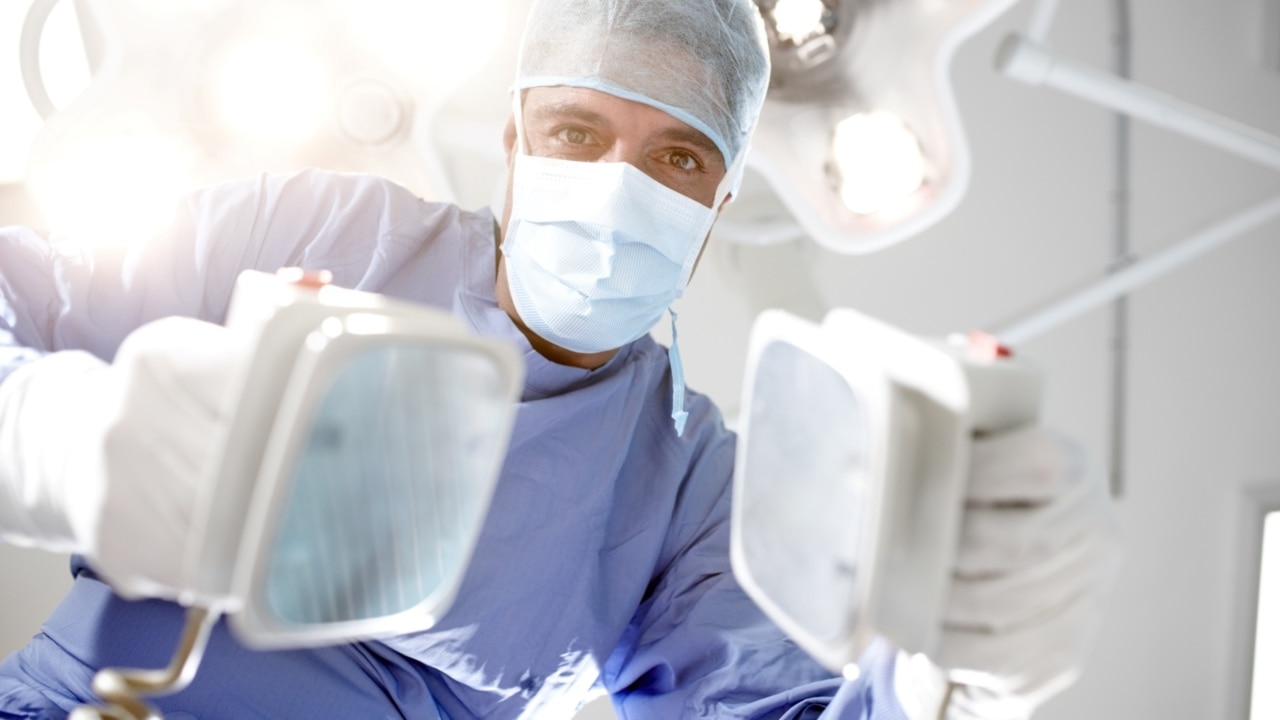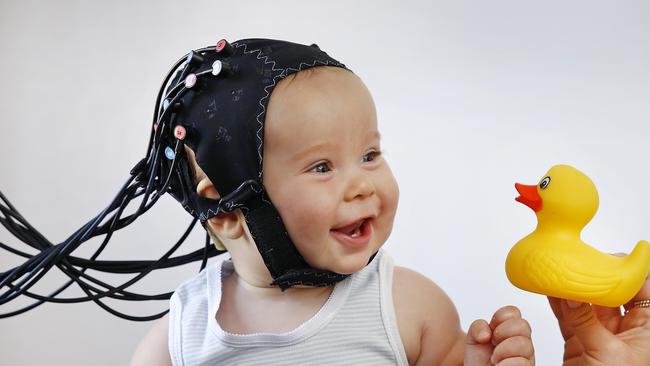Melbourne’s Bionics Institute discovered link between heart rate and hearing
Diagnosing young children with hearing problems has been difficult task for doctors. But Melbourne researchers have uncovered a non-invasive way to test the hearing of babies. Here’s how it works.

VIC News
Don't miss out on the headlines from VIC News. Followed categories will be added to My News.
THE heart rates of babies may soon be used to test their hearing.
An innovative electrode scalp cap is being developed to map infant brains and more objectively diagnose hearing problems.
In the process of devising a non-invasive light-based technology to measure the brain regions that are activated when sounds are heard or language is understood, researchers at Melbourne’s Bionics Institute have discovered a correlation between heart rate and hearing,
Babies and young children cannot articulate if they are deaf or hard of hearing, or if their hearing aid or cochlear implant is working properly.
MIDDLE AGED MEN TOP SUMMER DROWNING TOLL
HOW MELBOURNE PLANS TO LURE POMS
Children need to hear sounds early in life to properly mature the brain networks involved in understanding speech and developing language.
The EarGenie project, led by Professor Colette McKay and her BABILab research group, uses functional near infra-red spectroscopy (fNIRS) to measure oxygenated blood in the brain.
Children wear a swimming-cap style of sensors to detect which brain region respond to sound.
Within this brain signal, the patient’s heart rate is also mixed with that.
Lead author Dr Mehrnaz Shoushtarian said the while this had traditionally been treated as “noise” and removed from analysis, previous studies that showed the correlation between heart rate and hearing had prompted them to look into this area.

“The benefit of this brain imaging technique is that is saves a lot of testing time, and we can get both cardiac data and find out what brain regions are active,” Dr Shoushtarian said.
This proof-of-concept study saw 30 adults with normal hearing strap on the electrode caps, and have had their hearing tested with a series of sounds in normal hearing range.
Dr Shoushtarian said given that the test showed that different volume levels reliably correlated to different heart rates, they would now test the technique in babies.
This is a key step in the creation of their prototype EarGenie device, which aims to end the “hit and miss” way children were tested for and treated with hearing impairments.
One in three children with cochlear implants have poor understanding of speech and suffer delayed language development, highlighting the need for more personalised solutions based on how their brain processes language.
“If there is a better diagnosis then they can get better hearing devices fitted and more accurately programmed, and that will help their speech and language development,” she said
“There are lots of studies that have shown that getting the right range of sounds earlier, is definitely better for their language development in the first few years of life.”
The findings were published in the journal PLOS ONE.
HOW IT WORKS
1. The EarGenie device uses functional near-infrared spectroscopy, to calculate oxygenated blood in the brain.
2. Oxygen-rich blood is sent to the part of the brain activated when a person hears something.
3. The sensor-encased cap detects which part of the brain is activated.
4. The heart rate is combined with the brain signal, giving an extra objective measure of whether a person has heard something.


